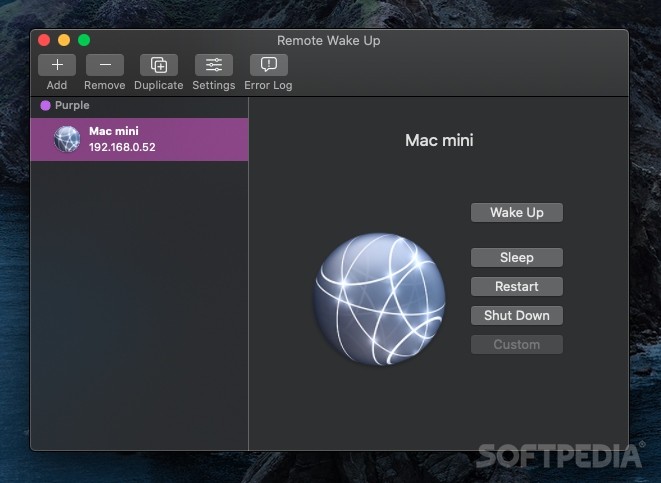
It is preferable to extract MAC addresses from Microsoft DHCP, because in this case the program can get MAC addresses of all the PCs in your network automatically. Switch to the All Machines view to make sure that all the PCs have reported their MAC entries Pic 1. Once DHCP is configured, it will be able report MAC addresses during Retrieve MAC Address operations.īefore executing a Wake-on-LAN operation, make sure that the program knows MAC addresses of the remote PCs.

Open the MAC Addresses Scan page of the program preferences to enable and check the DHCP servers configuration.
If you use Microsoft DHCP in your network, you can extract MAC addresses for all the network computers. Switch to the All Machines view to see the PCs from which a MAC address has not been extracted and run Retrieve MAC Address. If a PC was turned off, you can run the Retrieve MAC Address operation to get the MAC addresses. Note that for extracting a MAC address, a remote PC should be turned on during the network enumeration. Check the Execution Results view after the network enumeration to make sure that MAC addresses of the network PCs have been detected successfully. MAC addresses for remote PCs are detected automatically during the network enumeration. The program can detect MAC addresses in multiple ways: In addition, to use Wake-on-LAN, the program should know the MAC addresses of remote PCs to generate individual WOL packets for them. You can find detailed instructions for enabling Wake-on-LAN in the Configuring Machines' hardware for Wake-on-LAN chapter. Enable Wake-on-LAN in the network card configuration in Windows. Enable Wake-on-LAN in the BIOS settings. If you plan to use Wake-on-LAN, you need to enable it on the remote computers by following these steps: It means that to use the Wake-on-LAN technology, the computer you need to wake up should be configured to enable WOL. Besides, to wake up a computer, the receiver should listen to network packets, so the network card should be turned on even if you turn the computer off. To uniquely identify the target computer, a sender uses the unique MAC address of the network card of the receiver. Wake-on-LAN (WOL) is a technology supported by hardware that allows waking up computers by sending a specific network packet to them. In this chapter, you can see how to configure and use Wake-on-LAN. However, Wake-on-LAN is a specific operation because it is based on using the hardware technology to wake up computers, so it has a few specific requirements. You can use the same principles to configure and execute different operations. In the previous chapters, you could see how to configure and execute operations remotely.





 0 kommentar(er)
0 kommentar(er)
